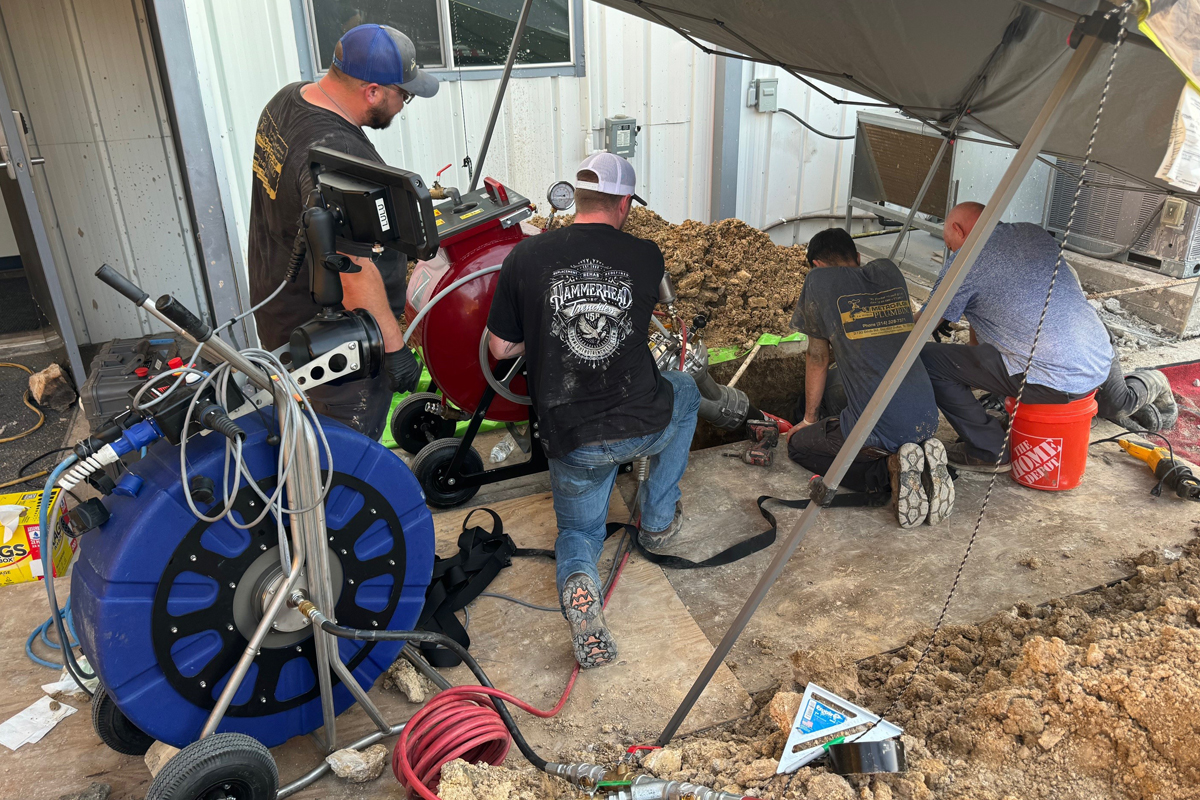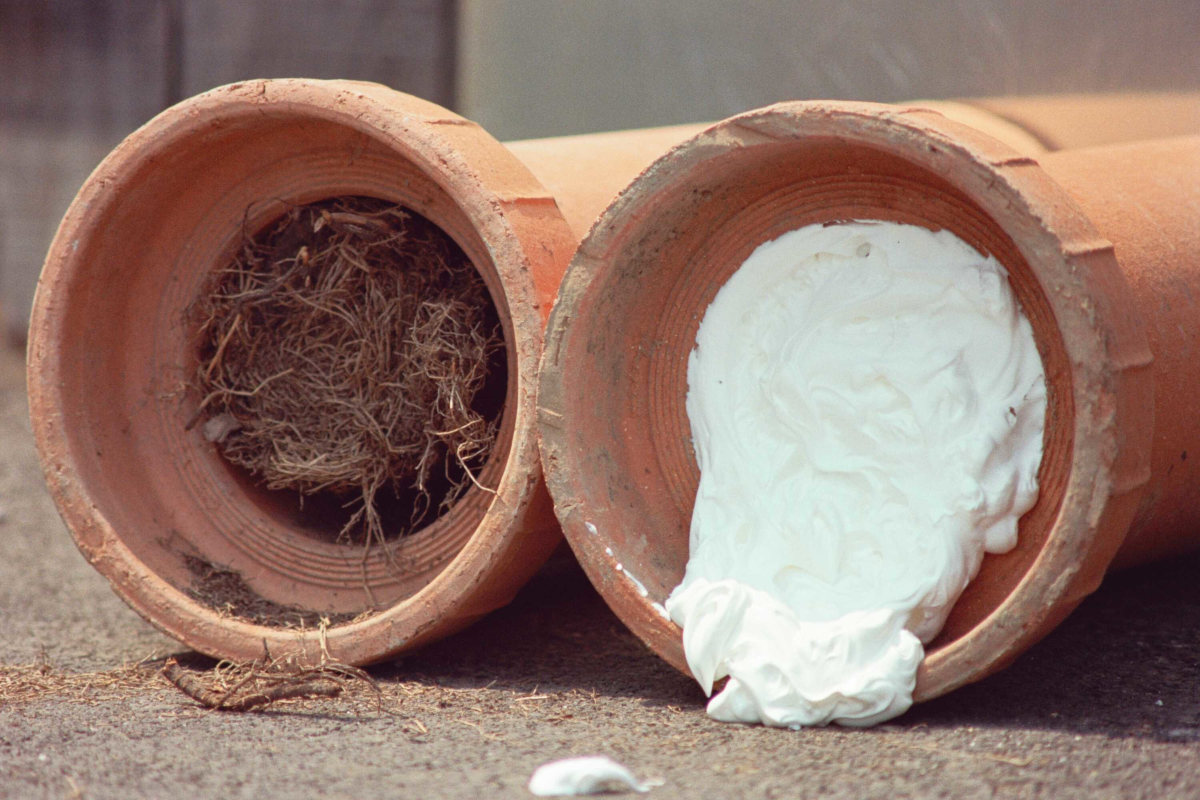
2024 Trenchless Technology Project of the Year New Installation Runner Up – First Creek Interceptor

Aurora Water’s First Creek Interceptor project was selected as the 2024 Trenchless Technology New Installation project of the Year Runner-up.
The First Creek Interceptor ensures a reliable, sustainable and efficient wastewater conveyance system for Aurora and neighboring communities. The trenchless components of this project also demonstrate exemplary engineering and construction practices, as well as the deployment of innovative solutions to varying and unpredictable site conditions.
“We’re super excited to be considered in the running for Project of the Year,” says Andrea Long, P.E., principal engineer Aurora Water. “This project has been part of a regional master plan and it’s been years in the making and in detailed design since January 2020. For it to come to fruition is exciting on our part.”

As Long notes, the First Creek Interceptor project was first identified in 2017 as part of a regional master plan for Metro Water Recovery’s (Metro) First Creek Sanitary Basin. The plan called for a new interceptor that would convey wastewater from Aurora and its neighboring communities to Metro’s new Norther Treatment Plan in Brighton, Colorado.
Metro Water Recovery designed its Northern Treatment Plant to support growth in the northern Aurora and other communities such as Brighton, Commerce City, Thornton, and unincorporated Adams County and Denver. “This gravity system allows for two benefits, “says Long. “One, it allows Metro Water Recovery to offload flows from its main facility and send it to the new treatment plant. And second, Aurora benefits because we could take four lift stations offline, saving long term capital and maintenance money and pretty much have a maintenance-free system.”
The First Creek Interceptor (FCI) system, comprising Segments 0 through 1E, begins at Aurora’s Prologis Lift Station and terminates at the Metro-owned regional Second Creek interceptor. The FCI system eliminates the need for Aurora’s Prologis Lift Station, First Creek Lift Station, Second Creek Lift Station and High Point Lift Station. Both trenchless and open-cut methods were used for the project.
The final segments of this gravity system, FCI Segments 1B, 1C and 1D, encompass approximately 21,300 lf of 42-in., 2,000 lf of 12-in., and 160 lf of 36-in. diameter gravity interceptors. The depths of the interceptors vary from 12 to 40 ft and cross several municipal boundaries. The project included six trenchless crossings under creeks, sensitive areas, arterial streets and a golf course. The trenchless work was completed by Henderson, Colorado-based BTrenchless, a division of BT Construction Inc.
Multiple trenchless techniques were approved for bidding, with the following methods being selected for each crossing:
Blue Grama Draw: guided auger bore, 54-in. casing, 140 lf
E 56th Avenue: guided pipe ram, 54-in. casing, 286 lf
Dunkirk Street: guided pipe ram, 54-in. casing, 262 lf
Green Valley Ranch Golf Course: microtunneling, 60-in. casing, 1,284 lf
Green Valley Ranch Boulevard: guided pipe ram, 60-in. casing, 233 lf
Piccadilly Street: microtunneling, 54-in. casing, 335 lf
During the construction phase, several newly installed utilities were discovered. In two specific areas, the presence of these utilities posed a significant challenge to open-cut crossings, necessitating their relocation.
The required relocations threatened to disrupt the construction timeline significantly. However, through collaborative brainstorming, BTrenchless proposed a value-engineered solution to hand tunnel the problematic crossings:
E. 64th Avenue: hand tunnel and direct jack, 42-in. Hobas, 80 lf
High Point Avenue: hand tunnel and direct jack, 42-in. Hobas, 100 lf
“We looked at several methods there [hand tunneled segments], but at the end of the day the hand tunnels made the most sense based on the soil conditions that we had seen in the area,” says Shawn August, senior project manager BTrenchless. He notes that the shorter hand tunnels had the best and most likely chance of success.
August adds that in addition to discovering the newly installed utilities, the most challenging part of the First Creek Interceptor project were the varying geotechnical conditions.
He notes that in some sections the calcium sediment was so high they had to adjust their slurry mix. Normally they would add calcium to the slurry, but in this instance, there was more than enough in the material.
“The ground conditions were tough,” he says. “You could move 20 ft and have completely different soils. There were a lot of clays, calcium sediment, sand and gravel, and the dewatering was also substantial on this project.”

Long adds that the contractor faced several instances of split-faced conditions that ended up being considered a change in field conditions despite having a full geotechnical report completed ahead of the work. “How the geology actually moved vs. what we thought it would do was completely different,” she says.
Why This Project Is Outstanding
This project not only achieved its primary objective of providing a reliable, sustainable, and efficient wastewater conveyance system but also demonstrated exemplary engineering practices, construction practices and innovative solutions under challenging conditions.
Innovative Problem-Solving: The team’s adaptive strategies in response to unforeseen soil chemistry and soil composition illustrate innovative problem-solving and effective collaboration.
Advanced Techniques: Having many tools in the toolbox allowed BTrenchless to seamlessly move between the most basic of tunneling methods to the most complex.
Resilience and Adaptability: The ability to address unexpected challenges, such as unknown utilities and groundwater issues, highlights the project team’s resilience and adaptability.
Long-Term Benefits: The gravity-driven system reduces the need for multiple lift stations, lowering maintenance requirements and operational costs, and providing a sustainable solution for wastewater management and growth in one of the fastest growing cities in Colorado.
Collaborative Effort: The successful collaboration among the owner, contractors, engineers and stakeholders ensured the project met its goals despite the challenges, reflecting the strength of teamwork and value engineering.
Environmental and Community Considerations: By using a combination of trenchless methods, the project minimized environmental impacts, preserved community aesthetics, and reduced traffic disruptions. This approach underscores a commitment to responsible engineering practices that balance infrastructural advancements with environmental stewardship and community welfare.
Significant Regional Impact: The FCI project is a critical component of the 2017 Regional Master Plan, which envisions a more efficient and sustainable wastewater conveyance system for the region. By linking Aurora’s wastewater system directly to the Northern Treatment Plant in Brighton, Colorado, the project supports regional growth and development while enhancing wastewater management capabilities.
The construction work began in late 2022 and the trenchless components were substantially complete in June 2024. The new pipeline will be online by the end of 2024.
Mike Kezdi is managing editor of Trenchless Technology.




